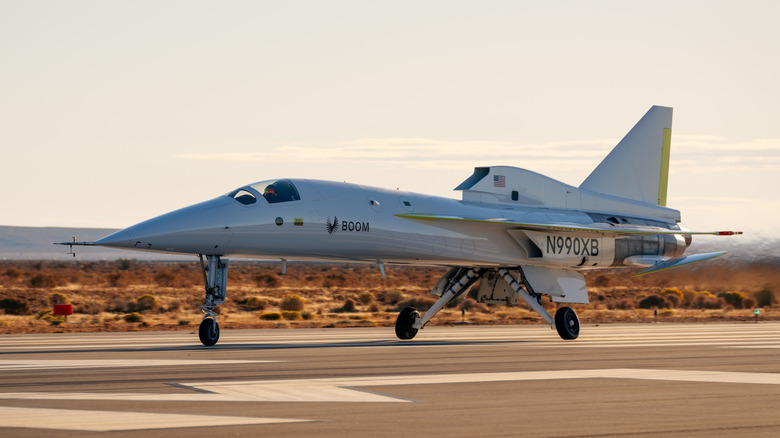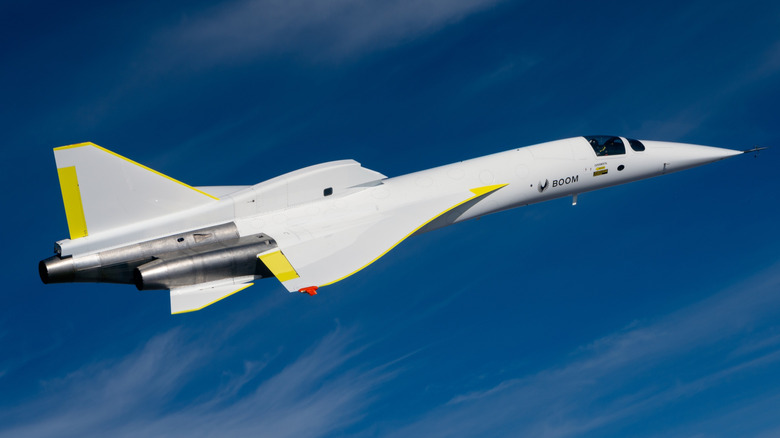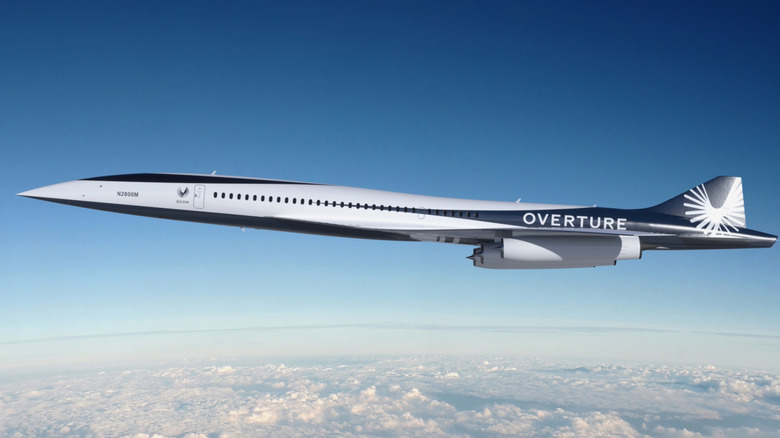The Supersonic Simulator: How XB-1 Pilots Train For Flight At Mach 1
Modern-day transatlantic flights on passenger planes typically take more than five hours. But did you know there was a time when it wasn't uncommon to make the same journey in a little over three hours? This was made possible by the Concorde: the only commercial supersonic passenger jet the world has ever seen.
More than two decades after the world's only commercial supersonic passenger jet made its final flight, the world is inching closer to a possible return of commercial supersonic aviation. Boom Overture, a new supersonic passenger plane being developed by American aviation company Boom Technology, may cross the Atlantic Ocean just like the Concorde did more than 20 years ago.
As a part of the Overture's development process, Boom Technology has developed another aircraft called the Boom XB-1. A compact version of the full-fledged passenger plane, the Boom XB-1 is classified as a supersonic technology demonstrator aircraft. Its primary purpose is to evaluate all the new technologies and materials needed for a safe and efficient supersonic flight in the post-Concorde era.
Given how important the XB-1's supersonic test flights are, every single flight is preceded by several weeks, even months of preparations. After being in development for several years, the Boom XB-1 is set to make its first-ever supersonic flight. An important moment in Boom Technology's history, the success of the XB-1's test flight is widely seen as a first step leading us closer to the return of commercial supersonic travel.
Key preparations before every test flight
One of the most important ways the test pilots of the Boom XB-1 train before every flight is by spending hours practicing on the XB-1 simulator. Boom's first generation XB-1 flight simulator — introduced in 2018 — was mostly used for human factor evaluations.
Two years later, in 2020, the company introduced the second-generation simulator, which the company has been using since. The upgraded Boom XB-1 simulator concentrated more on flight control system design, enabling the company to take crucial burn-down design risks thanks to the simulator's capability to make periodic pilot evaluations. The second generation simulator also gave test pilots a better feel and offered a higher mechanical accuracy in the representation of the XB-1's flight controls. Boom's test pilots use the second-generation XB-1 simulator to replicate critical emergency scenarios that range from engine failures, to difficult landings, and other system failures.
It is also vital for every XB-1 test pilot to be mentally fit before every test flight. Interestingly, it's not uncommon for pilots to get slightly nervous before flying. However, some pilots believe that getting slightly nervous is okay, as it is a sign that the flight is being taken very seriously.
Test pilots also work closely with the rest of the team to prepare a flight plan, which lets them think through all aspects of the flight. It is also not uncommon for pilots to watch videos of past test flights made by them. Watching their videos from a third-person perspective lets them evaluate their performance later.
The road ahead for the Boom XB-1
Given that the Boom XB-1 was always destined to be a supersonic flight demonstrator, it will be quickly retired after Boom Technology achieves the goal of supersonic flight. Per current plans, the company intends to make two supersonic test flights — achieving speeds of over Mach 1 — with Flight 13 likely being the Boom XB-1's last flight. The company expects the first of these flights on January 27, 2025 — followed by the second and final flight a couple of weeks later. Once the Boom XB-1's test flight phase ends successfully, the company will focus its attention on the development of the Overture supersonic passenger jet.
The end of the XB-1 program will be a bittersweet moment for Boom Technology, especially given the massive delays it has witnessed over the years. The XB-1 was first showcased in 2016, and the company aimed for its first flight in late 2018. In 2019, the company announced that it was moving the first flight to 2020. This announcement was followed by a string of other delays, which lasted until 2023.
Boom Technology hit a major milestone in August 2023 when it received an experimental airworthiness certificate from the FAA, clearing the way for its first-ever flight. Six months later, in March 2024, the XB-1 finally took to the skies for the first time, performing a subsonic flight. The first step for its supersonic flight was cleared in April 2024 when the FAA granted Boom Technology the authorization to conduct supersonic test flights.
It will be interesting to see how the development of the Boom Overture proceeds, once the test flight phase of the XB-1 concludes. Will it eventually become the Concorde replacement aviation enthusiasts have waited for over two decades?


